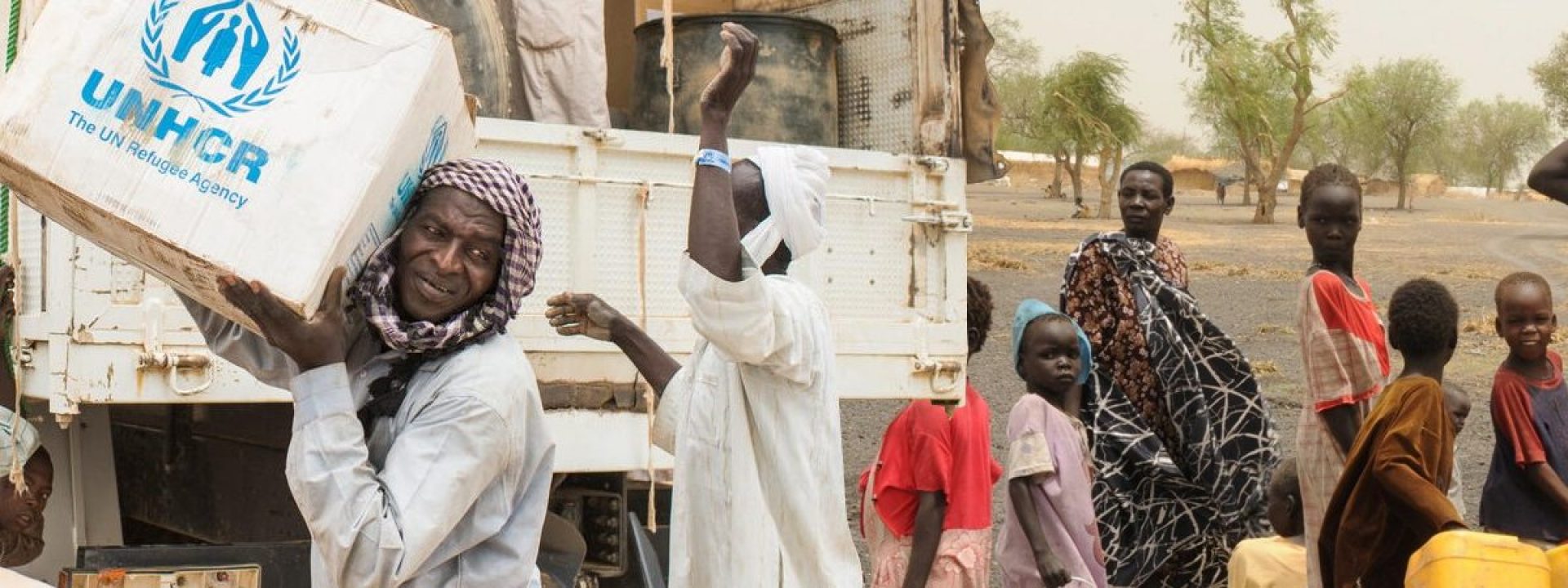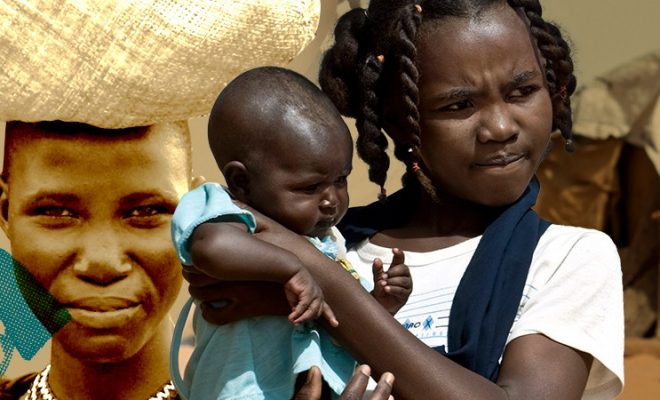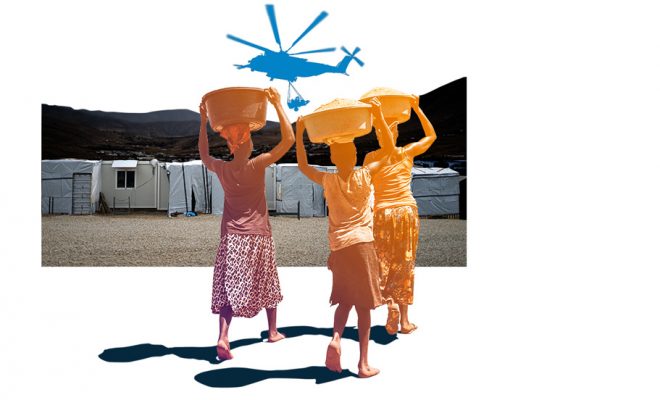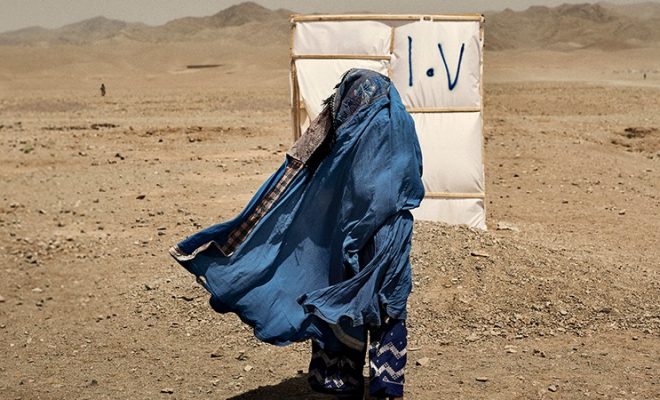
In less time than it will take you to read this article, some 90 people worldwide will have been forced to migrate because of violence or economic ruin. It is a journey with an uncertain future that, more often than not, leads to no short-term solution. The number of displaced people in the world continues to increase. According to UNHCR, in recent months, the conflicts in around 25 countries have caused a dramatic increase in the number of forced travelers: 100 million people have already left their homes, and more than half of them are children.
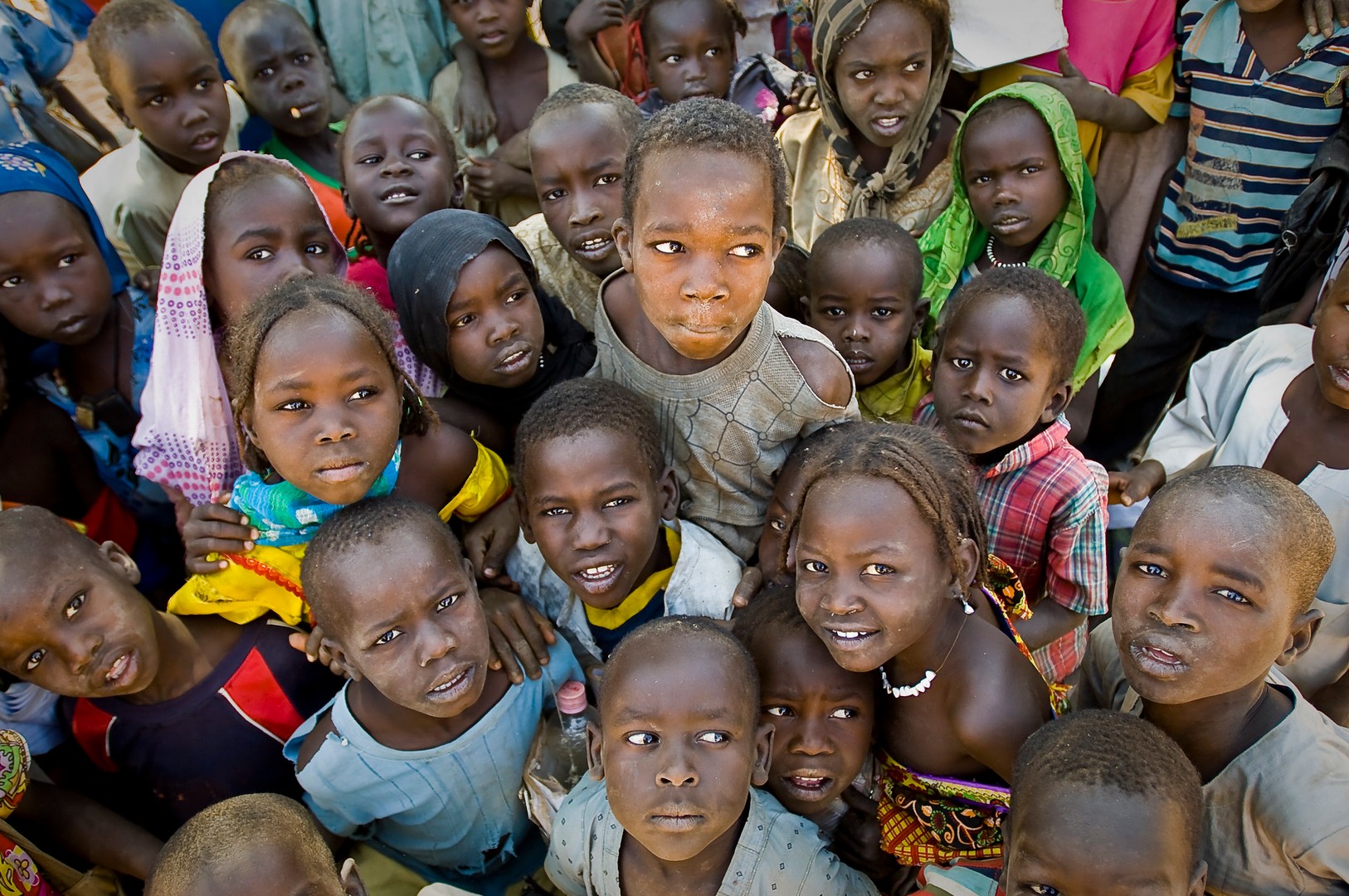
Another outbreak of violence in Sudan has triggered a new wave of refugees. Chad. © UNHCR / Frederic NOY
On the last World Toilet Day, in the panel discussion “Sanitation in conflict” that we organized at the Roca Madrid Gallery, José María Vera, executive director of UNICEF Spain, pointed out: “Who remembers conflicts like the one in the Central African Republic? And the famine in the Horn of Africa, where we are facing a situation of malnutrition unprecedented in recent decades? And the Sahel?” Oblivion is a scourge that appears in economically strong societies for various reasons; the weight of geopolitical interests, which divert the attention of the media, is one of the main ones.
Sudan, again
A few weeks ago, another conflict broke out in Sudan; a clash between the government army and paramilitary militias. UNHCR, like IOM, warns that another humanitarian tragedy is unfolding, adding to those that have plagued the region in recent decades. In the two weeks following the outbreak of violence on April 15, more than 50,000 people left Sudan, and the number of internally displaced persons (IDPs) has risen to 75,000. The number continues to grow.
Discouragement at the endless repetition of armed clashes is not helping public opinion to become aware of the need for urgent and effective aid. War violence has become commonplace in Sudan and South Sudan, but the triggered humanitarian crises tend to go unnoticed. This happened in 2011 in the Darfur conflict in western Sudan, a war between the government and rebel groups that began in 2003. One of the first projects in which we collaborated with Intermón Oxfam aimed, in addition to bringing water and sanitation to refugee camps in Chad, to fight against the international oblivion of a human tragedy that seems to have no end.
More pressure in Chad and South Sudan
Since then, the refugee situation has still not been resolved. Chad has been the main destination for Sudanese and South Sudanese displaced people, and UNHCR reports that more than 400,000 displaced people from these countries are now sheltering in 13 camps and local communities.
Chad shares a 1,400-kilometer border with Sudan, and crossings are growing out of control. But, as is always the case in these sudden outbreaks of violence, humanitarian aid is slow to be organized, and most of the first to flee are left in the open, under trees, without drinking water or food.
Their primary destination is refugee camps, as the region’s population cannot accommodate more than a few hundred people who live together with the displaced in a climate of internal tensions.
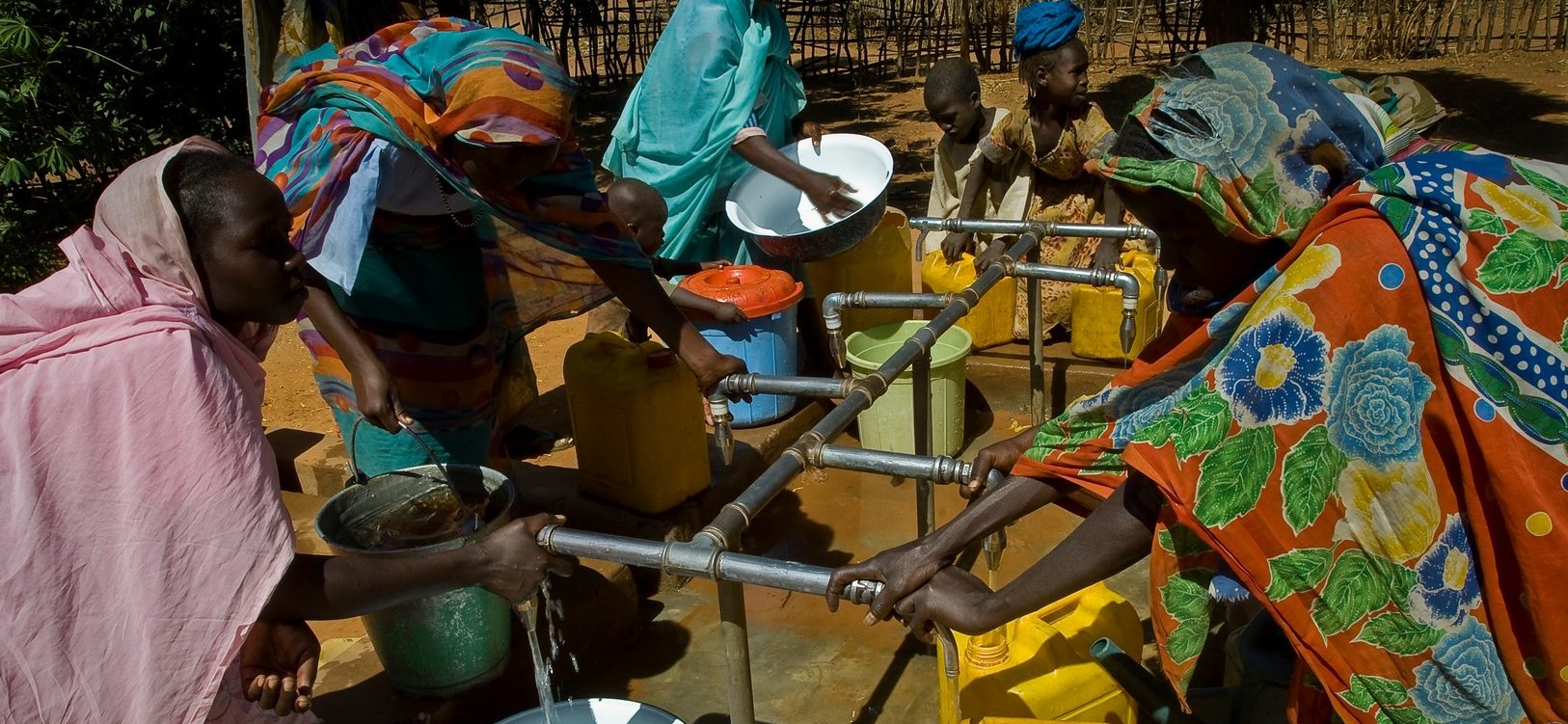
Chad has been the main destination for Sudanese and South Sudanese displaced people, and UNHCR reports that more than 400,000 displaced. Their primary destination is refugee camps. © UNHCR / Frederic NOY
These camps are in the heart of the Sahel, a semi-desert area that has been devastated in recent years by a series of severe droughts. The south of the country, which is more humid, has suffered the loss of its agricultural potential due to devastating floods. In addition to the lack of water, there is no sanitation infrastructure for the refugees, who live alongside the local population in a context of internal unrest.
In South Sudan, the situation is the reverse of that experienced in recent years: the return of many who fled in 2021 because of the worst floods ever experienced in the country and who had not been able to return to their homes. Although many have not yet been able to resume farming, at the end of April, some 4,000 people preferred food uncertainty to violence.
Did you know there is still a war in the Democratic Republic of Congo?
The drama is affected by the socio-economic context of the countries of origin and the host countries. Two of our experiences in aid projects show very different scenarios. In the Nyabiheke camp for Congolese refugees, in Rwanda, in the equatorial zone, water and sanitation planning follows WHO canons, as do the facilities for displaced Ukrainians in Romania and the Republic of Moldova.
However, in the African country, the humanitarian crisis stems from a conflict practically ignored by most international media. It tends to be overshadowed by other, more worrying conflicts, as in Sudan. The war in the Democratic Republic of the Congo, which officially ended in 2002, continues with its aftermath linked to the extraction of coltan and the trade in natural resources. Rwanda is the leading host country, totally dependent on international aid.
In the case of the war in Ukraine, the exodus of displaced people was dramatic from the outset. So we collaborated with World Vision on a project to rehabilitate 400 latrines and hygiene facilities in border settlements and temporary housing sites and with UNICEF to provide water to those remaining inside the country.
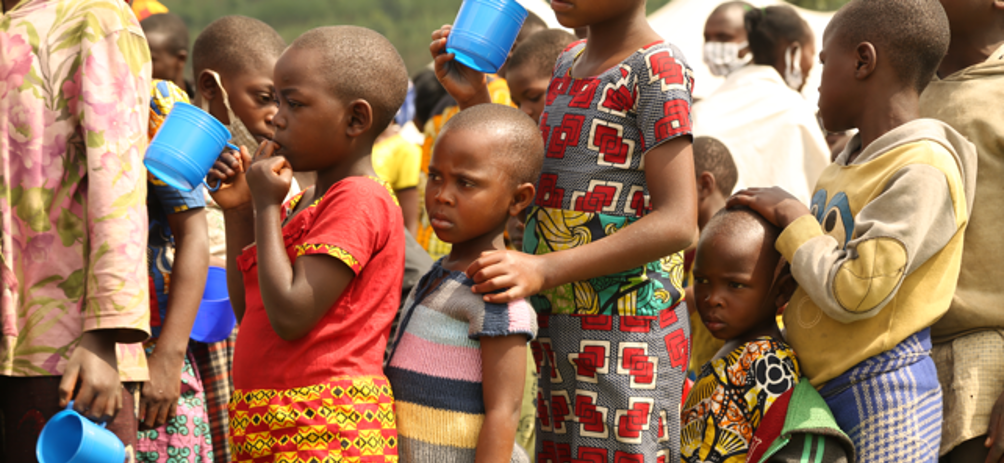
In the Nyabiheke camp for Congolese refugees, in Rwanda, in the equatorial zone, water and sanitation planning follows WHO canons. ©World Vision
However, the media coverage is radically opposite. The Ukrainian War is a war in Europe, and the global impact has been more significant than the endemic African violence. On the other hand, the European border countries that hosted the first exodus have advanced economies. They have the resources to move the displaced to urban centers where they can provide them with the basics in pavilions or sports halls: water, food, shelter, hygiene kits, medicines, and sanitation. A minority were welcomed in private homes, and these families had to adapt the available space in their homes and share resources, which in many cases were in short supply. At the same meeting in Madrid, Javier Ruiz, CEO of World Vision Spain, warned of the different perceptions of the crises in the developed world: “We cannot forget the other conflicts. There are no first and second-class displaced people.”
No money for a latrine for 20 people and a tap for 80?
For some time now, the crises triggered by violence and drought in Africa have been viewed from a geopolitical rather than a humanitarian perspective. The international media and the governments of wealthy countries seem to pay more attention to the interference of Russia and China in the exploitation of gold and coltan mines and to how the construction of the Grand Ethiopian Renaissance Dam may affect the African balance than to act decisively to solve the human drama of the refugees.
Setting up refugee camps means erecting tents for shelter, setting up infirmaries, field kitchens, schools, and maintenance workshops, and water and sanitation must be ensured to make it all work. Regardless of the climate of the host country, the flow of migrants leads to a demographic imbalance, with more stressful consequences the more significant the poverty of its inhabitants. The situation is aggravated when some refugee camps become permanent settlements, real cities that absorb resources, alter the environment, and increase social and economic stress.
Five liters of water per person daily is the minimum for survival in the emergency phase. However, WHO advises supplying at least 20 liters per person daily as soon as possible. Each supply point should cater to no more than 80 refugees. The need for water always adds pressure, which becomes unsustainable in areas where water shortages are an endemic problem, as in the semi-desert regions of Chad.
The next step is to provide sanitation, an essential factor for the health of the displaced. Latrines, sinks, and showers must be installed; planning for this is complex. The standard emergency solution is to build common pit latrines for both sexes, calculating a minimum of one for every 20 people. In the initial emergency phase, few are designed for people with disabilities who require assistance in their use.
In 2021, the UN launched an international appeal requesting USD 35 billion for humanitarian funding, which includes refugee camps. According to the World Bank, this amount represents approximately 0.04% of global GDP. It would not require a great effort to achieve this, but the focus seems to be elsewhere. As Karmele Sáez, head of UNHCR’s Project Department, pointed out: “The problem is that there are more and more displaced people but less and less funds.”


